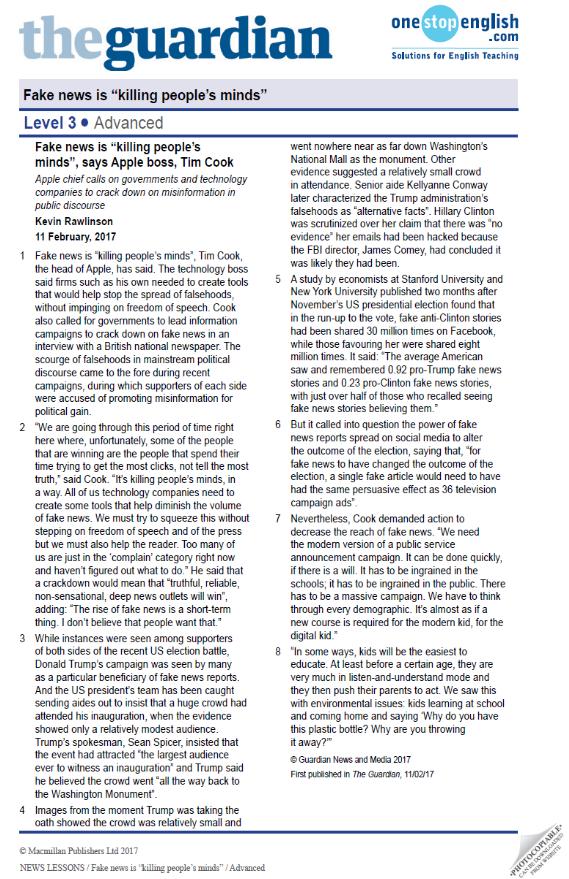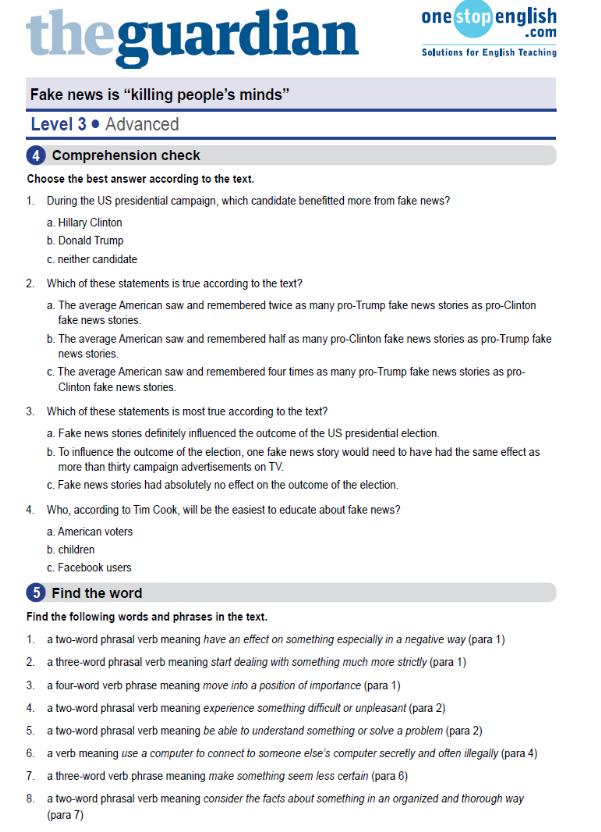
- •After reading tasks.
- •The Uses of Different Media
- •The mass media
- •The British Press
- •Why I Avoid Reading Ukrainian Newspapers and Magazines
- •Tv Invention
- •The Internet
- •Read the text, change or add new information to your notes.
- •Vocabulary Focus
- •I didn’t know that!
- •Questions 1-5
- •2.Questions 6-12
- •Indian cinema
- •Vocabulary
- •In pairs, use the context to work out the meaning of these expressions.
- •5 Найкращих історичних фільмів, які варто переглянути
- •Read the guidelines for writing a film review and confirm your answers
- •Directors
- •Interviewing Ingmar Bergman
- •Essential vocabulary
- •Vocabulary Notes
- •1. Paraphrase the following sentences using the word combinations and phrases:
- •2. Explain what is meant by:
- •3. Answer the following questions and do the given tasks:
- •Vocabulary exercises
- •1. Study the Vocabulary Notes and translate the illustrative examples into Ukrainian. Pay attention to the words and word combinations in bold type:
- •2. Paraphrase the following sentences using your active vocabulary:
- •3. Explain or comment on the following sentences:
- •4. Give English equivalents for the following phrases:
- •Violence On Screen
- •Дуже страшне кіно
- •Text interpretation
- •Intention/Purpose
- •Internal, deep structure?
- •Don't merely point out features. Say why the writer has used them and consider what the writer is trying to do. What? why? effect?
- •The scheme of the analysis of the fiction text (and some useful phrases)
- •The Sample of the Text Analysis The man of destiny
Year IV
English
TERM 1
MODULE 1.1 Mass Media
MODULE 1.2 CINEMA
The Scheme of the Newspaper Article Rendering
The newspaper article has all of the important information in the opening paragraph.
This information includes who, what, when, where, why and how. It is written this way because most people do not read an entire newspaper article all the way through.
So newspaper writers put the most important information at the beginning.
A typical newspaper article contains five (5) parts:
Headline: This is a short, attention-getting statement about the event.
Byline: This tells who wrote the story.
Lead paragraph: This has ALL the who, what, when, where, why and how in it. A writer must find the answers to these questions and write them into the opening sentence(s) of the article.
Explanation: After the lead paragraph has been written, the writer must decide what other facts or details the reader might want to know. The writer must make sure that he/she has enough information to answer any important questions a reader might have after reading the headline and the lead paragraph. This section can also include direct quotes from witnesses or bystanders.
Additional Information: This information is the least important. Thus, if the news article is too long for the space it needs to fill, it can be shortened without rewriting any other part. This part can include information about a similar event.
The plan for rendering the article |
Some expressions to be used while rendering the article |
1. The title of the article |
The article is entitled.../ headlined... |
2. The author of the article where and when the article was published. |
The author of the article is... The article is written by... It is (was) published in... |
3. The main idea of the article. |
The key problem of the article is... The main idea of the article is... The article is devoted to The article deals with... The article dwells upon / touches upon... The purpose of the article is to give the reader some information on... |
4. The contents of the article. Some facts, names, figures. |
a) The author/journalist writes (states, stresses, thinks, points out, condemns, sets out his ideas on..., reveals/exposes the drawbacks (shortcomings, lacks) of..., focuses (concentrates) the reader's attention on...)... The article describes (depicts)... b) According to the text... Further the author reports (says) that... The article goes on to say... c) In conclusion. The author comes to the conclusion that... |
5. Your opinion of the article. |
I am not an expert in this field but... I found the article interesting (important, dull, of great importance, of great value, too hard to understand)... As far as I can judge . There's no denying the fact that... In my opinion (to my mind, from my point of view) the problems raised in the article are ... I'm not really (quite) sure that... Frankly speaking... To tell the truth... I must admit... I'm of the opinion that... |
Some necessary phrases
I am/was supposed
|
to analyze to render |
the following article… |
This article is taken from the newspaper / the journal / the magazine/ the Internet site …
The article is entitled/ headlined …
“…” dated the …the of September carries the article entitled …
I’m going to speak about (on)/ to report on …
I’ll start my information saying that …
I’d like to tell a few words about/ to draw one’s attention to …
Speaking about … I can’t help mentioning about …
As it was pointed out in …
As the title implies …
In the opening lines (in the very beginning) of this article the author tells us about …
The author
|
calls / points out / tells explains / states / reports emphasizes / demands resorts / shows / reveals describes / draws / depicts approves / condemns exposes / portrays analyses |
the events the characters the lacks / the shortcomings the achievements the faults / the problems the drawbacks / the evils the competitions the result |
|
The article
|
deals with … /is devoted to …/ discusses…/ concentrates … highlights …/ sums up … / reports on international affairs … informs the reader … / reviews the latest events abroad … touches upon … / gives full attention to … gives wide coverage of …/ presents the general picture of … focuses the reader’s attention on … |
||
The next part of the article is devoted to …
The contents of the article …
The purpose of the article is to discuss (show) …
Much attention is given to …
The key-note of the article is to provide much information on / to give front-page prominence to …
The substance of the problem is …
The widest spectrum of …
At the end of the article …
We can draw a conclusion …
That’s about all I wanted to tell you …
That brings me to the end of my report …




What are the Mass Media?
Pre-reading task.
Answer the following questions:
What role do the Mass Media play in your life?
What is your favourite source of communication? (Why?)
After reading tasks.
Answer the following questions:
What does the reader turn for his newspaper for?
What do magazines give their readers?
What can television and radio offer?
What are the important agencies of communication?
Who works for different Mass Media?
Comment on the following words:
adjunct
syndicates
core
practitioners
continuity writers
merchandising
to gauge
Use them in the examples
press associations a) merchandising
syndicates b) distributing and collecting
advertising agencies c) serving
advertising departments d) offering news and pictures
public relations counciling firms e) gauging and guiding
research individuals and groups f) offering information in behalf of the clients
III.Writing.
“You can hardly find a person living through a day without feeling the impact of the Mass Media” (100-120 words)
What are the Mass Media?
Look through the text again and find the equivalents to the following word combinations:
вплив засобів масової інформації;
брошури;
рекламні проспекти;
помічники засобів масової інформації;
інформаційне агентство = асоціація новин;
націлений на;
апелювати/звертатися до чуттів зору та слуху;
презентувати точку зору рекламодавців;
висвітлювати події;
синдикати пропонують;
на користь клієнтів;
поширювати та збирати інформацію;
коментар;
виконувати інформаційну роль;
розважальні статті (нариси, матеріали);
послуговувати у чому-небудь;
другорядна інформація;
оцінювати вплив повідомлення;
ефективні шляхи;
безперервний редактор;
персонал з чого-небудь;
пропонувати новини та фотографії;
просувати (товари);
щоденні газети;
щотижневики;
друковані ЗМІ;
центр уваги зосереджено на.
Read and discuss the following text.
WHAT ARE THE MASS MEDIA?
A message can be communicated to a mass audience by many means: hardly an American lives through a day without feeling the impact of at least one of the mass media. The oldest media are those of the printed word and picture which carry their message through the sense of sight: the weekly and daily newspapers, magazines, books, pamphlets, direct mail circulars, and billboards. Radio is the mass communications medium aimed at the sense of sound, whereas television and motion pictures appeal both to the visual and auditory senses.
The reader turns to his newspaper for news and opinion, entertainment, and the advertising it publishes. In the weekly the focus is upon the reader's own community; in the daily the focus is upon the nation and the world as well. Magazines give him background information, entertainment, opinion, and the advertising; books offer longer range and more detailed examination of subjects, as well as entertainment; pamphlets, direct mail pieces, and billboards bring the views of commercial and civic organizations. Films may inform and persuade as well as entertain. Television and radio offer entertainment, news and opinion, and advertising messages and can bring direct coverage of public events into the listener's home.
There are important agencies of communication which are adjuncts of the mass media. These are (1) the press associations, which collect and distribute news and pictures to the newspapers, television and radio stations, and news magazines; (2) the syndicates, which offer background news and pictures, commentary, and entertainment features to newspapers, television and radio, and magazines; (3) the advertising agencies, which serve their business clients, on the one hand, and the mass media, on the other; (4) the advertising departments of companies and institutions, which serve in merchandising roles; and the public relations departments, which serve in information roles; (5) the public relations counciling firms and publicity organizations, which offer information in behalf of their clients, and (6) research, individuals and groups, who help gauge the impact of the message and guide mass communicators to more effective paths.
Who are the communicators who work for and with these mass media? We think of the core as being the reporters, writers, editors, announcers, and commentators for newspapers, news magazines, television and radio, press associations, and syndicates. But there are many others: news photographers; book and publication editors and creative personnel in the graphic arts industry; advertising personnel of all types; public relations practitioners and information writers; business management personnel for the mass media; radio-television script and continuity writers; film producers and writers; magazine writers and editors; trade and business paper publication writers and editors; industrial publication editors; technical writers in such fields as science, agriculture and home economics; specialists in mass communications research; and teachers of journalism. Actors in television and motion pictures also are communicators in a special sense, adding emotional impact to the written script.
Edwin Emery. Introduction to Mass Communications.
Under the Lens Communication and Media
Some people say that they prefer one form of media over another because for them it is more credible, or believable. Such an opinion is stated in the following. Do you agree or disagree with the following statement?
'Television is more credible than newspapers. When you read a story in the newspaper, you have to remember that what you read is from the reporter's perspective. However, television allows you to see the event firsthand. You can make your own conclusions based on what you see."
Read the following passage.
